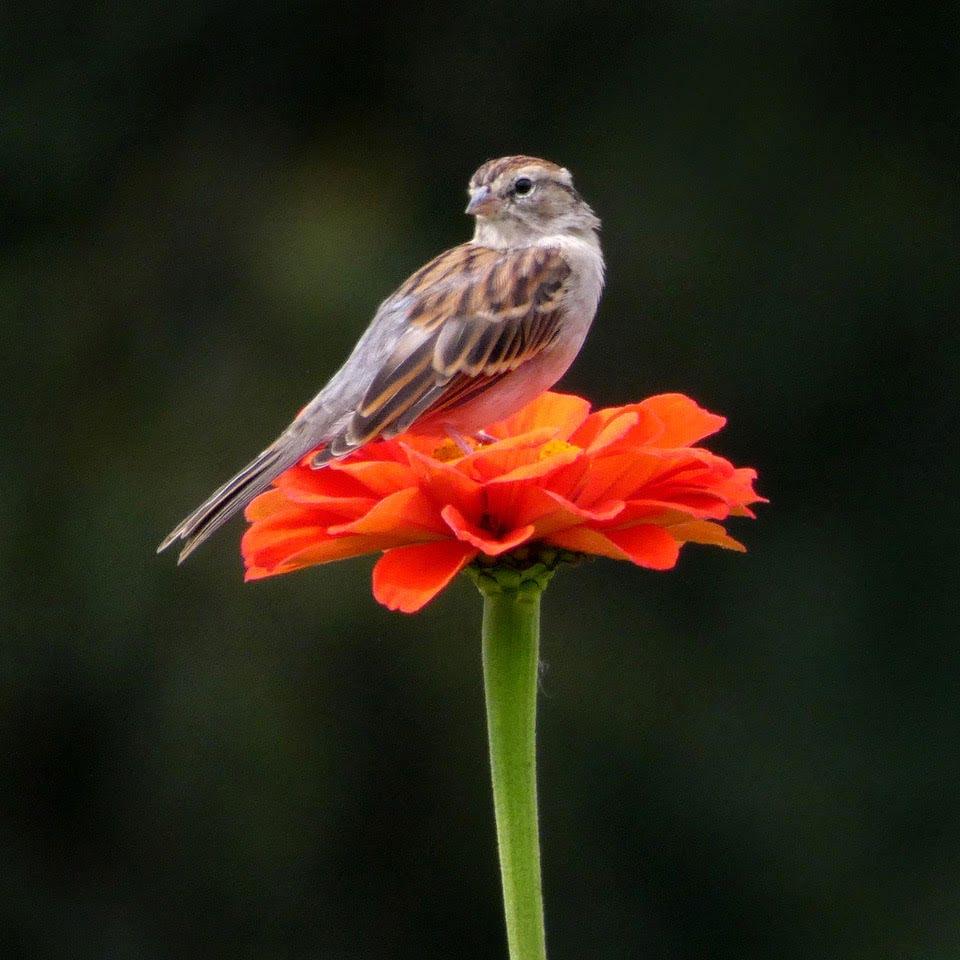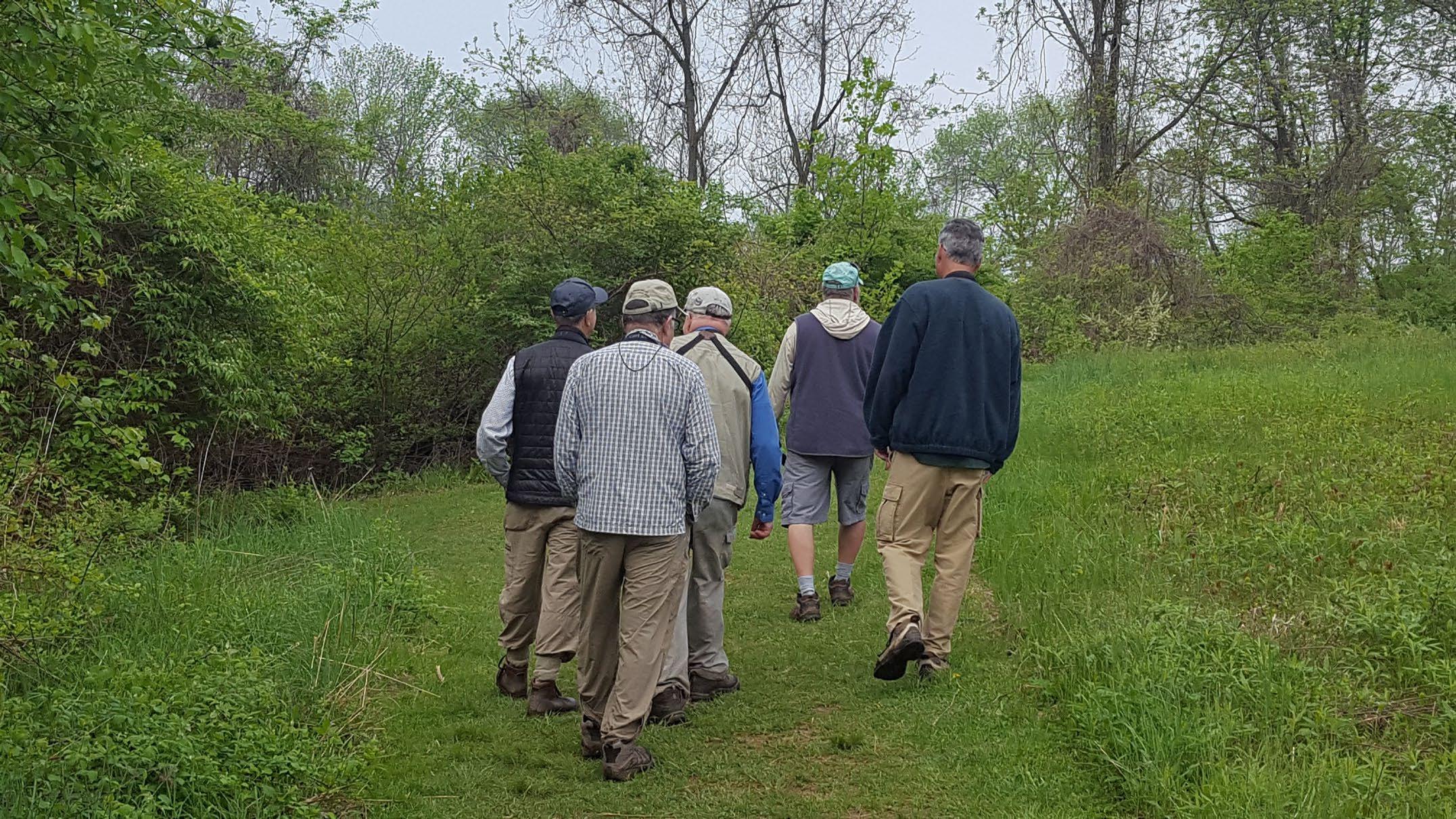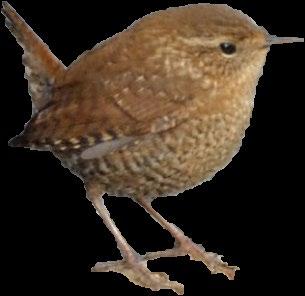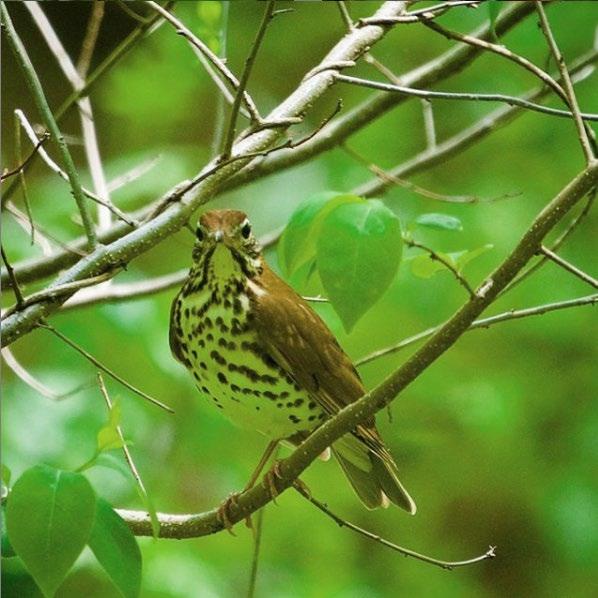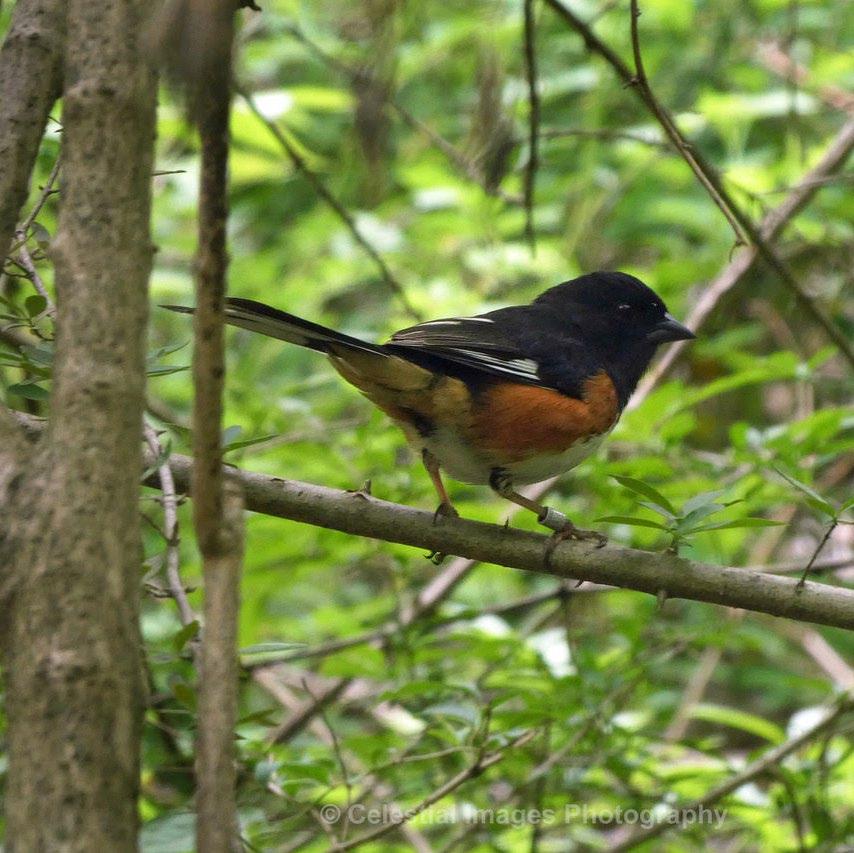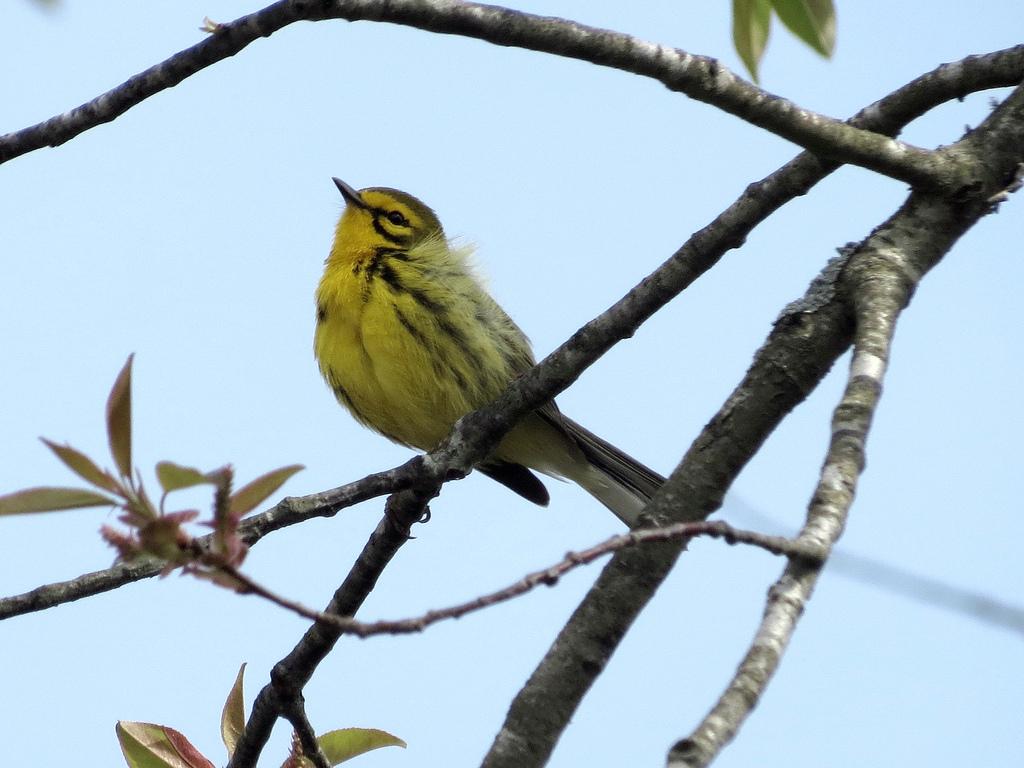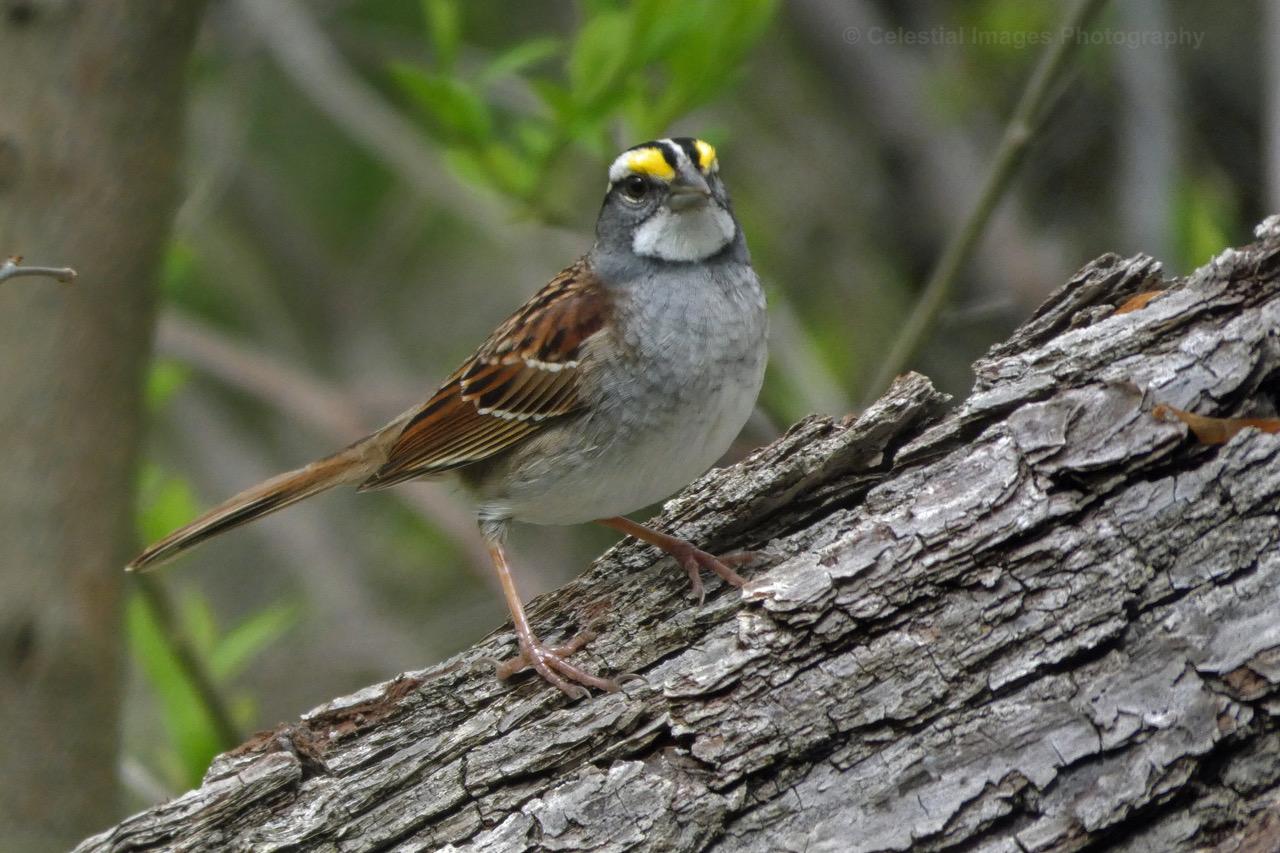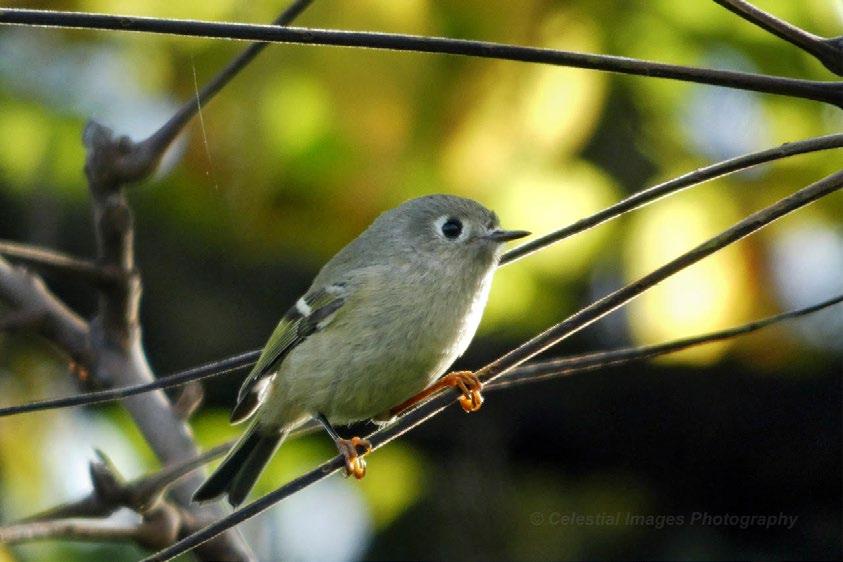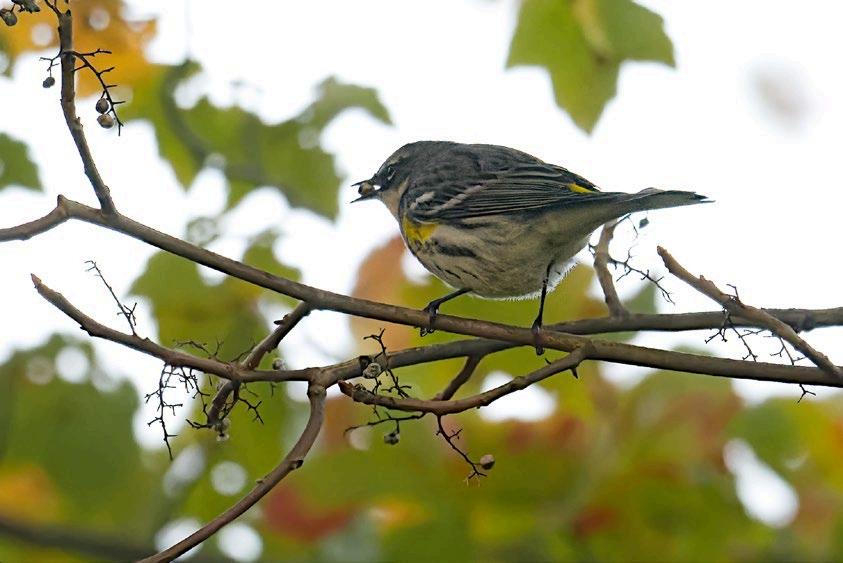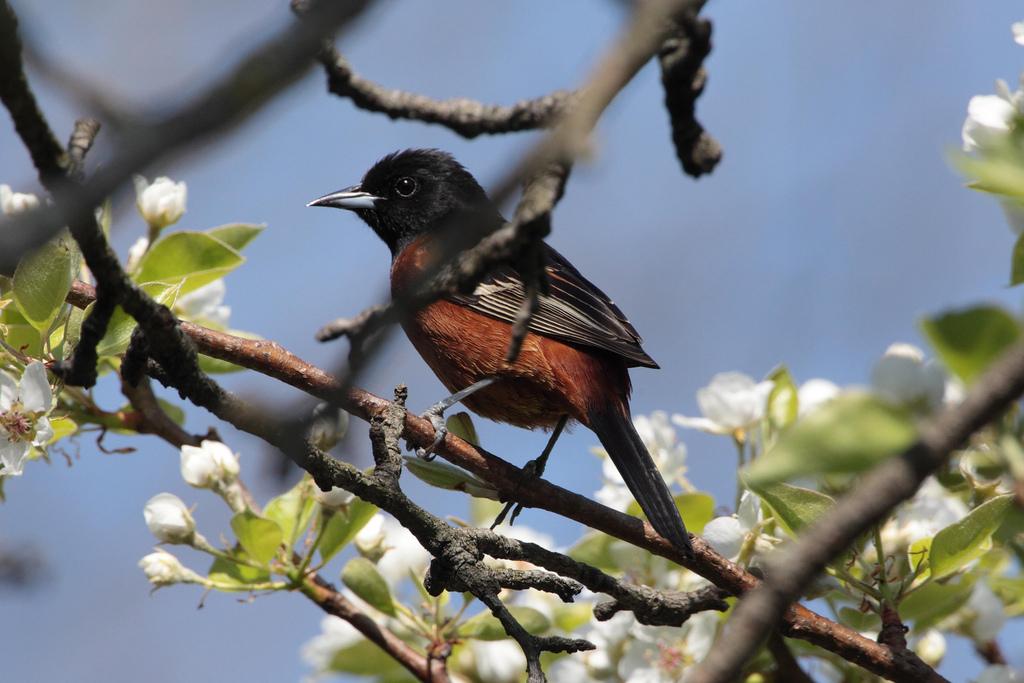Chipping Sparrow on Tithonia. Photo by Celeste Sheehan
Willistown Conservation Trust’s (WCT) Bird Conservation Program established a bird monitoring program in 2009 to survey the bird populations in the greater Willistown area, an area that was also designated by National Audubon an Important Bird Area (IBA) called the Upper Ridley/Crum IBA. Nine properties or preserves, shown in yellow on Figure 1, are surveyed four mornings per year to record the bird species present during the breeding season (summer), spring and fall migrations, and the winter period. Birds are important indicators of habitat quality as well as environmental changes over time and monitoring these areas can give us a better understanding of the local bird populations and the impacts that small areas can have. All data is collected through eBird, a citizen science tool developed by the Cornell Lab of Ornithology, which contributes to our understanding of the annual cycle of birds on a global scale.
Introduction
Figure 1. Willistown Conservation Trust program area map with bird monitoring survey areas.
Since 2009, a dedicated group of volunteers have been monitoring the birds in the Upper Ridley/Crum IBA (Important Bird Area). One day each spring, fall and winter, following a standardized monitoring protocol, the group records all birds seen and heard during a 20-minute period while walking the designated area. During the summer, when the birds establish territories for nesting and are singing loudly, the bird monitoring group survey at fixed points, for five minutes each and records all birds seen and heard. All other birds seen or heard outside of the protocol areas are accounted for as well. All data is recorded in eBird, which contributes to a citizen science database and allows for long-term assessments of bird populations on a local, regional and global scale.
Methods
Bird monitoring group at Rushton Woods Preserve. Photo by WCT Staff.
To date, a total of 157 bird species have been recorded across all nine areas. over time, during just one visit per season each year, we can see that at least 75 species are likely nesting on or in the vicinity of the program areas monitored. The variety of habitat types around the properties support many different species and individuals of resident and migratory species. It is encouraging to see that the area supports breeding populations of severely declining populations species such as Wood Thrush, Veery, Ovenbird and Scarlet Tanagers!
Wood Thrush. Photo by Brian Storey
Pileated Woodpecker. Photo by Celeste Sheehan.
American Redstart. Photo by Mike Rosengarten. Eastern Towhee. Photo by Celeste Sheehan.
Both spring and fall migrations are important stages in the annual life cycle of birds. The WCT bird monitoring group has recorded over 125 bird species during both migratory seasons including at least 20 species of warblers that are only found in this area during migration. Documenting the bird species and number of individuals over time can help identify critical stopover habitat for migratory songbirds as well as changes in local populations. Birds need high quality habitat to fuel up when they stop on migration, and even these small habitats can provide a welcome shelter and meal.
Palm Warbler. Photo by Celeste Sheehan
Prairie Warbler (left) Magnolia Warbler (right). Photos by Mike Rosengarten.
Finally, while many of our breeding birds head south for the winter, others stay year-round as well as some that find Pennsylvania just far south enough for the winter! During the winter months, our bird monitoring team has recorded species like chickadees, cardinals and woodpeckers that call this their home all year, as well as white-throated sparrows and slate-colored juncos that breed in the northern forests and scrubland and join us for the winter months. We have even noted wintering Yellow-rumped Warblers and Ruby-crowned Kinglets taking advantage of poison ivy berries and the few hearty insects.
White-throated Sparrow. Photo by Celeste Sheehan.
Ruby-crowned Kinglet. Photo by Celeste Sheehan Yellow-rumped Warbler. Photo by Elliot Cobin
Through consistent monitoring over time, it has become clear that areas within the Upper Ridley/Crum IBA and the WCT Program area supports a diverse group of bird species in the woodland, open fields and pond habitats. It must be noted that in less than one human lifetime, North American bird populations have plummeted by 30% with no ecosystem spared; that's 3 billion, or one in four birds gone since 1970, largely due to human actions. It is critical that we continue to learn information about species abundance and diversity, individual longevity and site fidelity, and how birds are using our conserved land throughout their annual cycle.
We thank our dedicated volunteers for taking the time to document the birds in the greater Willistown area consistently over time.
A full list of species observed each season can be found in Appendix A.
Orchard Oriole. Photo by Dustin Welch
Appendix A. WCT bird list by season for all areas monitored 2009-2021.
A = Abundant: a common species which is very numerous
C = Common: certain to be seen in suitable habitat
U = Uncommon: likely present, but not certain to be seen
R = Rare: seen at intervals of 2 to 5 per year
* = Likely nests on property or in vicinity of program area
SWANS, GEESE, AND DUCKS
Teal
TURKEYS, AND QUAIL
Bobwhite
EAGLES, AND HAWKS
